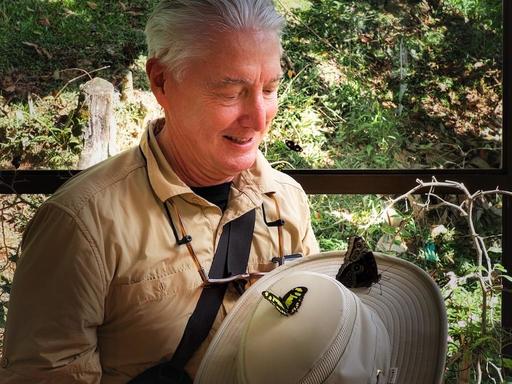This is The Digital Story Podcast 1,012, August 12, 2025. Today's theme is, "How It All Began." I'm Derrick Story.
Opening Monologue
I'm one of those odd folks who always knew what I wanted to do for a living. As a kid, I tormented my parents with requests to the photo shop for supplies to brew the alchemy for my own film processing. Then, in Junior High, I got my big break. And that story is how we lead off today's TDS Photography Podcast. I hope you enjoy the show.
Tune-In Via Your Favorite Podcast App!
Apple Podcasts -- Spotify Podcasts -- Stitcher
Podbean Podcasts -- Podbay FM -- Tune In
How It All Began
The story of my first big break as a photographer.
Camera Industry News
This Documentary Traces the Rise and Deep Fall of the Camera Industry - You can read the entire article on PetaPixel.com.
Ricoh GR IV nears release: New specs, features and design - is this the most refined compact camera yet? - You can read the entire article on DigitalCameraWorld.com.
These 5 Game-Changing APS-C Cameras Prove Full Frame Isn't Everything - You can read the entire article on FStoppers.com.
Gear We Miss: 5 Products That Deserve a Comeback - You can read the entire article on LensRentals.com.
Virtual Camera Club News
Inner Circle Bold. Sign up for the Annual Membership that's only $75.60 a year, you will receive all of the regular Inner Circle benefits, plus a coupon for your choice of a 2026 Online workshop hosted by me.
TDS Photography Workshops! Reserve your spot now. We have an exciting slate of online and in-person events. If you have any questions, use the Nimble Photographer Contact Form. I will get back to you ASAP.
Route 66 Photography Workshop - Oct. 14-17, 2025 - Join pro photographer and Route 66 explorer Rob Knight to explore the "mother road" this October. We will be based in Winslow and Kingman, Arizona, putting us right in the middle of the action.
Sonoma County Autumn Adventure Workshop, led by Derrick Story, starting on Nov. 4, 2025.
You can reserve your place of each of these events by visiting our Workshops Page.
Costa Rica! June 2026 - Complete information and registration here. This will be a once in a lifetime photography event. I hope you can join us.
The Nimble Photographer Newsletter is now publishing every Thursday. Readers will enjoy a variety of content spanning from short photo essays, to commentary on weekly events, to reviews of the latest and coolest photo gear.
Inner Circle Members: A big thanks to those who support our podcast and our efforts! We are having a blast at our new Inner Circle hangout, the private group I've set up at DerrickStoryOnline. We'd love it if you join us. You can become an Inner Circle Member by signing up at our Patreon site. You will automatically be added to the new hangout.
Great Photography Articles on Live View - If you check out our publication and appreciate what you see, be sure to follow us and clap for those authors. You can find us at medium.com/live-view.
If you're interested in writing for Live View, drop me a line at dstory@gmail.com.
The New Donation Kit for Carefree Shipping of Found Film Cameras - If you've discovered a film camera that's no longer being used, our new Donation Kit makes it easy to pack and ship. Just visit the Contact Form on thenimblephotographer.com, click the box next to Donating a Film Camera, and let me know what you have. In your note, be sure to include your shipping address.
Affiliate Links - The links to some products in this podcast contain an affiliate code that credits The Digital Story for any purchases made from B&H Photo and Amazon via that click-through. Depending on the purchase, we may receive some financial compensation.
Red River Paper - And finally, be sure to visit our friends at Red River Paper for all of your inkjet supply needs.
See you next week!
You can share your thoughts at the TDS Facebook page, where I'll post this story for discussion.





















